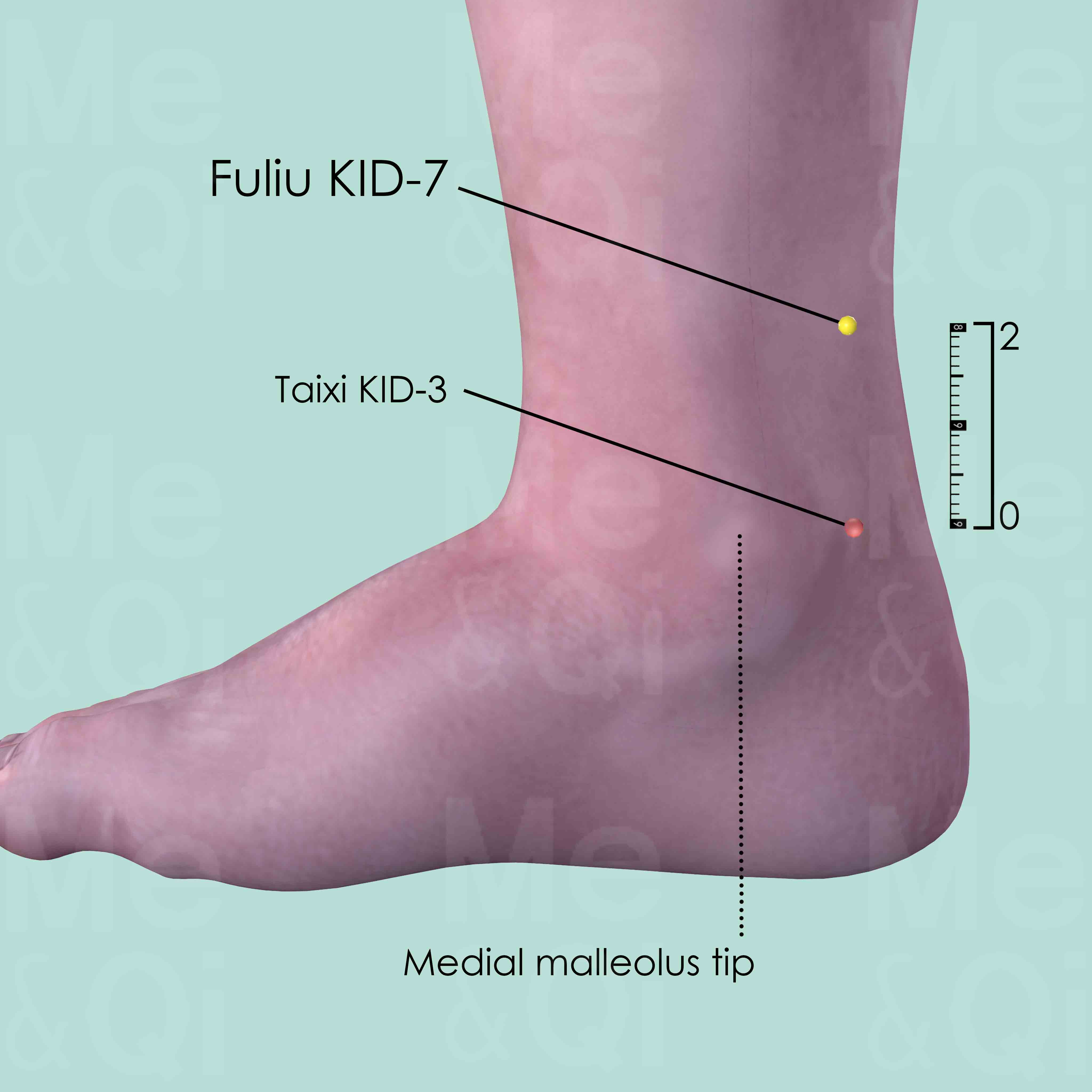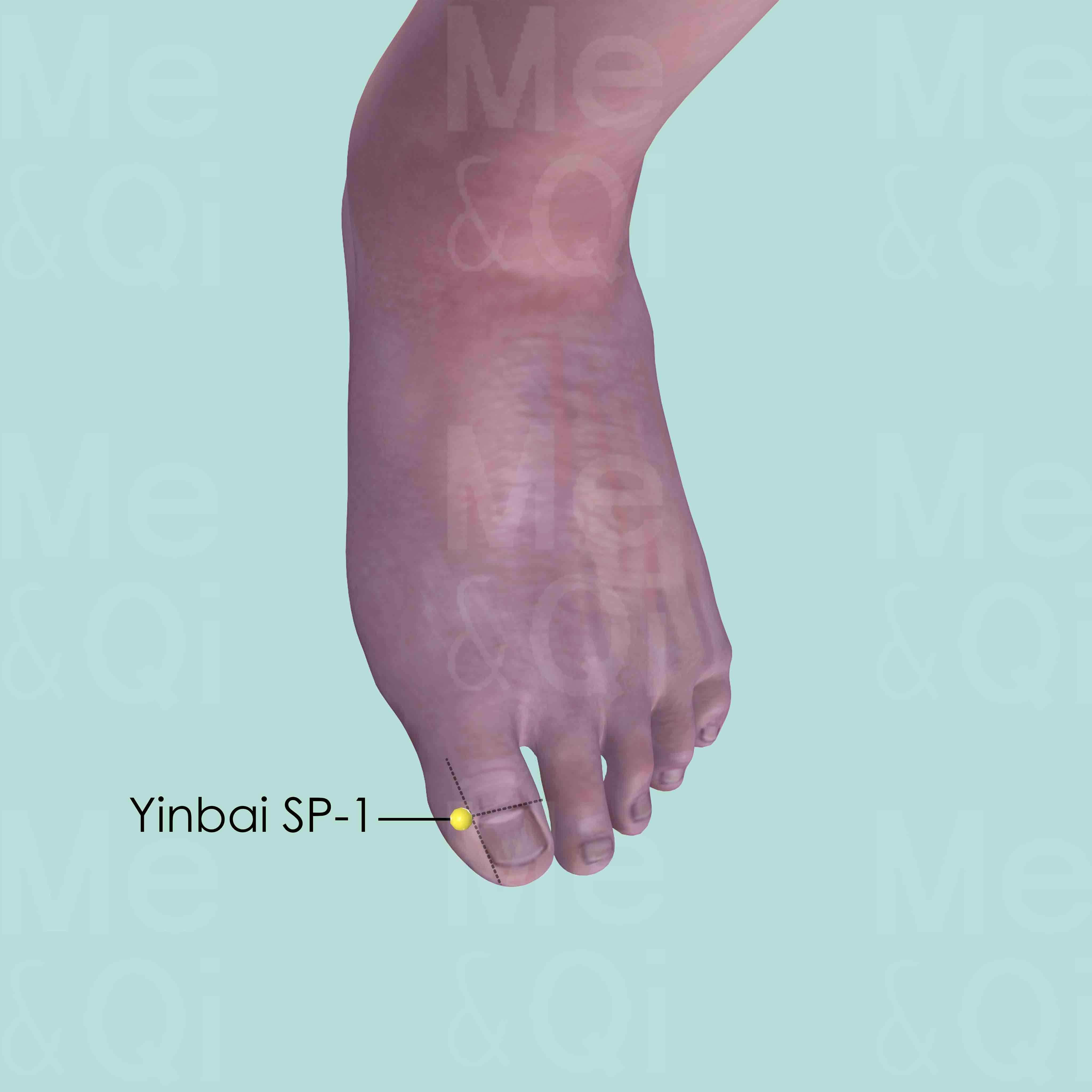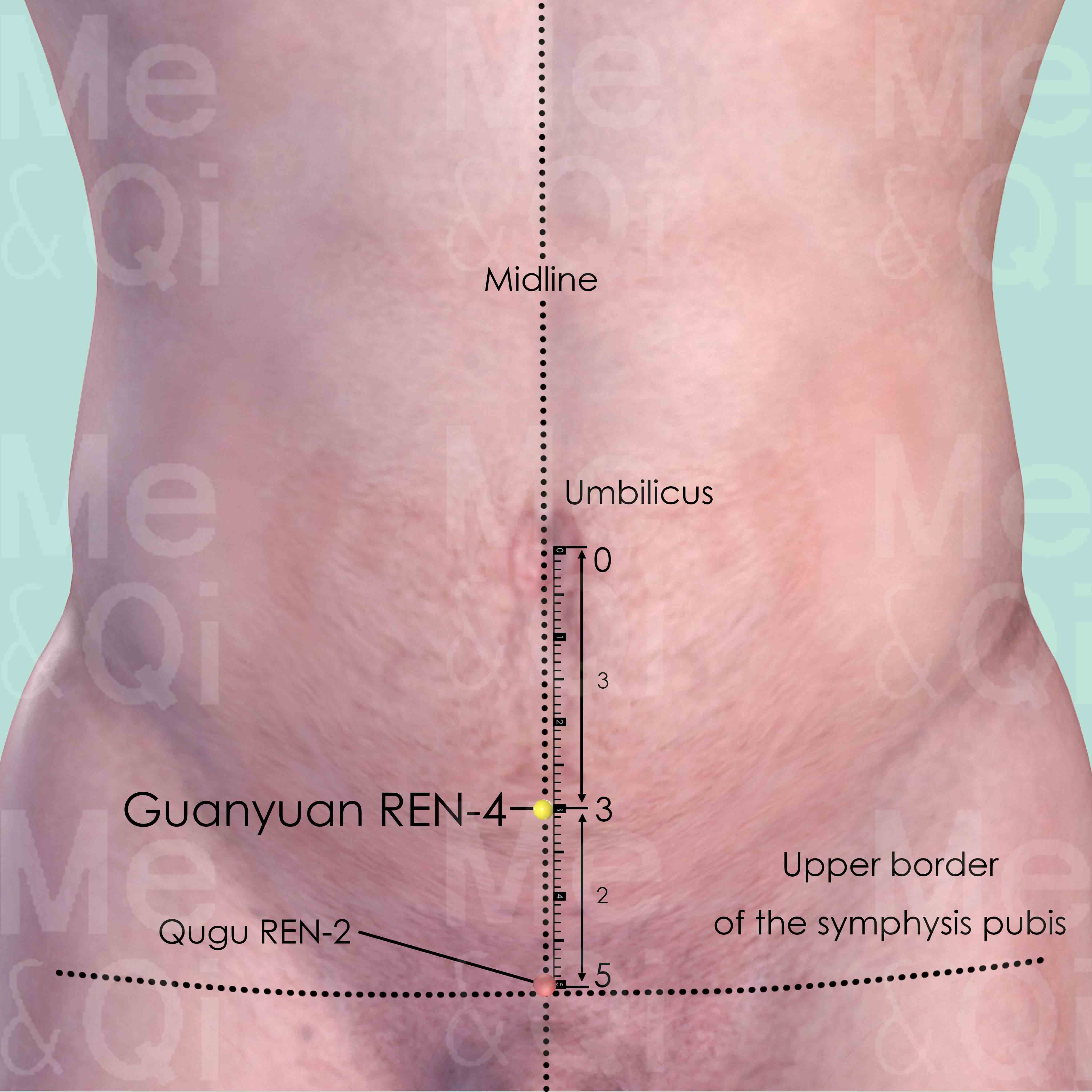Hematuriaaccording to TCM
Symptom family: Urine Color & Composition Abnormalities
What is Hematuria?
Hematuria, commonly referred to as blood in urine, is a condition characterized by the presence of red blood cells in the urine, making it appear reddish or brownish. This symptom can indicate various underlying conditions, ranging from urinary tract infections to more serious diseases affecting the kidneys or urinary tract.
Hematuria can be visible to the naked eye (gross hematuria) or detectable only under a microscope (microscopic hematuria). It's a symptom that warrants medical evaluation to determine its cause.
How does TCM view Hematuria?
Traditional Chinese Medicine (TCM) approaches hematuria from a holistic perspective, focusing on the balance and flow of Qi, the body's vital energy. In TCM, hematuria is often seen as a manifestation of underlying disharmonies within the body's organ systems, particularly the Kidneys and Bladder.
Treatment in TCM aims to restore balance and address the root cause of the symptom through a combination of herbal medicine, acupuncture, dietary recommendations, and lifestyle modifications.
Root Causes of Hematuria in TCM
In TCM, hematuria is often attributed to patterns of disharmony such as Heat or Phlegm. For instance, Damp-Heat in the Bladder can lead to symptoms like blood in urine, urinary burning, and frequent urination. Similarly,
Full-Heat in the Small Intestine might present with hematuria, restlessness, and mouth ulcers. Other patterns like Phlegm in the Kidneys or Gallbladder can also manifest as hematuria. TCM practitioners tailor their approach based on the individual's specific pattern to effectively treat the condition.
Explore below more details about what might cause Hematuria according to TCM.
- By Syndrome
- By Organ
- Heat
- Mind Disturbance
- Dampness
- Yin Deficiency
- Blood Deficiency
- Phlegm
- View More Causes
- Bladder
- Kidney
- Small Intestine
- Heart
- Gallbladder
- View More Organs
Heat
In TCM "Heat" signifies an excess of Yang energy, leading to an imbalance where heat predominates over the body's cool Yin aspects. This condition is metaphorically akin to an internal over-heating. Symptoms indicative of Heat can include feelings of warmth, fever, sweating, irritability, red face, thirst with a preference for cold drinks, and a rapid pulse. The tongue may appear red with a yellow coating. Unlike the common interpretation of heat in terms of temperature, in TCM, it represents a state of hyperactivity or inflammation in the body.... see more
Heat Patterns That Can Lead to Hematuria
Common Symptoms: Restlessness Feeling Hot Insomnia Dark Urine Fever Scanty And Dark Urine Thirst Bitter Taste In The Mouth
| Pattern Name | Relevant Symptoms | Relevant Formulas |
|---|---|---|
| Damp-Heat in the Bladder | Blood in urine, Frequent and urgent urination, Urinary burning, Urination stopping in the middle of flow, Dark urine, Cloudy urine, Hematuria, Fever, Dry mouth without desire to drink, Lower abdominal fullness and pain, Feeling hot... see more | Ba Zheng San |
| Full-Heat in the Small Intestine | Blood in urine, Restlessness, Insomnia, Tongue ulcers, Mouth ulcers, Throat pain, Deafness, Cardiac burning sensation, Abdominal pain, Craving for cold beverages, Scanty and dark urine, Hematuria, Urinary burning... see more | Dao Chi San |
| Greater Yang Accumulation of Blood | Blood in urine, Lower abdominal distension, Lower abdominal fullness, Hematuria, Restlessness | Tao He Cheng Qi Tang |
| Heat victorious agitating Blood | Blood in urine, Restlessness, High fever, Mania, Macules, Vomiting blood, Nosebleeds, Hematochezia, Hematuria... see more | Xi Jiao Di Huang Tang |
| Heart Fire blazing | Bloody urine, Palpitations, Thirst, Mouth ulcers, Tongue ulcers, Restlessness, Anxiety, Feeling hot, Insomnia, Flushed face, Hematuria, Dark urine, Bitter taste in the mouth... see more | Xie Xin Tang | Zi Xue Dan | Qing Xin Lian Zi Yin | Liang Ge San |
| Heat in the Blood | Bloody urine, Feeling hot, Red skin eruptions, Thirst, Frequent bleeding, Bloody sputum, Hematochezia, Hematuria, Vomiting blood, Hemoptysis, Nosebleeds, Excessive menstruation... see more | Xi Jiao Di Huang Tang | Gu Jing Wan | Shi Hui San | Bai He Di Huang Tang | Hua Ban Tang | Qing Ying Tang | Qing Re Gu Jing Tang |
| Kidney Yin Deficiency With Empty-Heat Blazing | Bloody urine, Flushed cheekbones, Restlessness, Insomnia, Night sweats, Low grade fever in the afternoon, Heat sensation in palms, Afternoon heat sensation, Evening heat sensation, Scanty and dark urine, Hematuria, Dry throat, Preference for sipping, Dizziness, Tinnitus, Hearing loss, Lower back pain, Nocturnal emission, Hypersexuality, Dry stools... see more | Liu Wei Di Huang Wan | Zhi Bo Di Huang Wan |
| Damp-Heat | Red urine, Fever, Neck gland swelling, Headaches, Tight feeling in chest and stomach, Sticky taste in the mouth, Absence of thirst, Feeling hot, Feeling of heaviness, Bitter taste in the mouth, Acne... see more | Long Dan Xie Gan Tang | Yi Huang Tang |
Mind Disturbance
In TCM "Shen" refers to the mind or spirit, and a Shen disturbance is a pattern of disharmony that affects the mental and emotional state. This concept reflects the TCM belief in the deep interconnectedness of mind and body. Symptoms of Shen disturbance can vary widely but often include anxiety, insomnia, restlessness, confusion, or in severe cases, hallucinations or delirium. These symptoms indicate an imbalance in the body's energies affecting the heart, which in TCM is not only the center of blood circulation but also the seat of the mind and consciousness. The root of Shen disturbance can be traced to various factors, including emotional stress, physical illness, or an imbalance in fundamental substances like Qi, Yin, or Yang.... see more
Mind Disturbance Patterns That Can Lead to Hematuria
Common Symptoms: Restlessness High Fever Mania Macules Vomiting Blood Nosebleeds Hematochezia Palpitations
| Pattern Name | Relevant Symptoms | Relevant Formulas |
|---|---|---|
| Heat victorious agitating Blood | Blood in urine, Restlessness, High fever, Mania, Macules, Vomiting blood, Nosebleeds, Hematochezia, Hematuria... see more | Xi Jiao Di Huang Tang |
| Heart Fire blazing | Bloody urine, Palpitations, Thirst, Mouth ulcers, Tongue ulcers, Restlessness, Anxiety, Feeling hot, Insomnia, Flushed face, Hematuria, Dark urine, Bitter taste in the mouth... see more | Xie Xin Tang | Zi Xue Dan | Qing Xin Lian Zi Yin | Liang Ge San |
Dampness
"Dampness" in TCM is a concept that describes a pattern of disharmony where the body accumulates excess moisture. Imagine the heavy, sticky feeling you get on a very humid day; that's similar to what dampness feels like internally. It can manifest as a sense of heaviness, bloating, sluggishness, or even a foggy mind. This condition is often thought to arise from environmental factors like living in a damp place, dietary habits that promote moisture in the body, or internal imbalances that hinder the body's ability to process fluids properly. In TCM, dampness can obstruct the normal flow of energy and fluids in the body, leading to various symptoms.... see more
Dampness Patterns That Can Lead to Hematuria
Common Symptoms: Fever Feeling Hot Leukorrhea Frequent Urination Frequent And Urgent Urination Urinary Burning Urination Stopping In The Middle Of Flow Dark Urine
| Pattern Name | Relevant Symptoms | Relevant Formulas |
|---|---|---|
| Damp-Heat in the Bladder | Blood in urine, Frequent and urgent urination, Urinary burning, Urination stopping in the middle of flow, Dark urine, Cloudy urine, Hematuria, Fever, Dry mouth without desire to drink, Lower abdominal fullness and pain, Feeling hot... see more | Ba Zheng San |
| Damp-Heat | Red urine, Fever, Neck gland swelling, Headaches, Tight feeling in chest and stomach, Sticky taste in the mouth, Absence of thirst, Feeling hot, Feeling of heaviness, Bitter taste in the mouth, Acne... see more | Long Dan Xie Gan Tang | Yi Huang Tang |
Yin Deficiency
Yin deficiency in TCM is a pattern of disharmony characterized by a depletion of the body's Yin energy, which represents the cooling, moistening, and nurturing aspects of our physiology. This condition often arises from factors like chronic stress, overwork, insufficient rest, or prolonged illness. Symptoms of Yin deficiency can include a sensation of heat, especially in the afternoon or evening, night sweats, insomnia, a dry mouth or throat, and a red tongue with little coating. There might also be a general feeling of restlessness or irritability. Since Yin is essential for balancing the body's active and warm Yang energy, its deficiency leads to a relative excess of Yang, manifesting as heat or dryness symptoms.... see more
Yin Deficiency Patterns That Can Lead to Hematuria
| Pattern Name | Relevant Symptoms | Relevant Formulas |
|---|---|---|
| Kidney Yin Deficiency With Empty-Heat Blazing | Bloody urine, Flushed cheekbones, Restlessness, Insomnia, Night sweats, Low grade fever in the afternoon, Heat sensation in palms, Afternoon heat sensation, Evening heat sensation, Scanty and dark urine, Hematuria, Dry throat, Preference for sipping, Dizziness, Tinnitus, Hearing loss, Lower back pain, Nocturnal emission, Hypersexuality, Dry stools... see more | Liu Wei Di Huang Wan | Zhi Bo Di Huang Wan |
Blood Deficiency
Blood Deficiency in TCM is like when your body's tank runs low on the vital energy that blood provides. It's not exactly the same as anemia in modern medicine, which is about having too few red blood cells. Instead, Blood Deficiency in TCM is about your body not having enough of the life-giving qualities that blood brings, like nourishment and moisture. This can make you feel tired, look pale, and even feel dizzy or have blurry vision. It's like a garden not getting enough water to stay lush and vibrant. TCM sees this as an imbalance where the body isn't being nourished as it should be, impacting overall health and well-being.... see more
Blood Deficiency Patterns That Can Lead to Hematuria
| Pattern Name | Relevant Symptoms | Relevant Formulas |
|---|---|---|
| Loss of Blood | Heamaturia, Bloody urine, Nosebleeds, Uterine hemorrhage, Hematuria, Hematochezia, Hemoptysis, Vomiting blood, Dark menstrual clots, Excessive menstruation, Bloody sputum... see more | Xi Jiao Di Huang Tang |
Phlegm
In TCM "Phlegm" as a pattern of disharmony is a complex concept that extends beyond the physical manifestation of mucus. It represents a pathological factor that can disrupt the flow of Qi (vital energy) and blood, leading to various health issues. Phlegm in TCM is seen as a sticky, turbid substance arising from the body's inability to metabolize fluids properly, often due to a dysfunction of the spleen. It's not only associated with respiratory problems like cough and congestion but also with systemic issues. Symptoms can include a feeling of heaviness, mental cloudiness, dizziness, and in some cases, the formation of lumps or masses. Phlegm can even be "invisible," contributing to emotional disturbances like depression or stress. ... see more
Phlegm Patterns That Can Lead to Hematuria
| Pattern Name | Relevant Symptoms | Relevant Formulas |
|---|---|---|
| Phlegm in Kidneys or Gallbladder | Bloody urine, Frequent and urgent urination, Urinary dysfunction, Hematuria | Si Ni San | Pai Shi Tang |
Bladder
In TCM the Bladder plays a crucial role beyond its basic function of storing and excreting urine. It is intimately connected with the Kidney system, helping to regulate the body's water balance and being a key component in the processing and elimination of fluids. The Bladder also influences the lower part of the body and the back. When it malfunctions or is imbalanced in TCM, it can lead to urinary issues like frequent urination, incontinence, or painful urination. Additionally, there may be problems related to its meridian pathway, such as lower back pain, stiffness, or weakness in the legs. The Bladder’s condition in TCM can also reflect emotional states, with imbalances potentially leading to feelings of fear or anxiety.... see more
Bladder Patterns That Can Lead to Hematuria
Common Symptoms: Frequent And Urgent Urination Urinary Burning Urination Stopping In The Middle Of Flow Dark Urine Cloudy Urine Fever Dry Mouth Without Desire To Drink Lower Abdominal Fullness And Pain
| Pattern Name | Relevant Symptoms | Relevant Formulas |
|---|---|---|
| Damp-Heat in the Bladder | Blood in urine, Frequent and urgent urination, Urinary burning, Urination stopping in the middle of flow, Dark urine, Cloudy urine, Hematuria, Fever, Dry mouth without desire to drink, Lower abdominal fullness and pain, Feeling hot... see more | Ba Zheng San |
| Greater Yang Accumulation of Blood | Blood in urine, Lower abdominal distension, Lower abdominal fullness, Hematuria, Restlessness | Tao He Cheng Qi Tang |
Kidney
In TCM the Kidneys are regarded as the body's most fundamental reservoir of Essence, known as Jing, which influences growth, reproduction, and aging. They are not just organs for filtering blood, but a holistic system governing vital life forces. When the Kidneys malfunction in TCM, it can manifest as a variety of health issues, such as chronic fatigue, reproductive problems, imbalances in fluid metabolism leading to edema or dryness, lower back pain, and a sense of fear or insecurity.... see more
Kidney Patterns That Can Lead to Hematuria
Common Symptoms: Flushed Cheekbones Restlessness Insomnia Night Sweats Low Grade Fever In The Afternoon Heat Sensation In Palms Afternoon Heat Sensation Evening Heat Sensation
| Pattern Name | Relevant Symptoms | Relevant Formulas |
|---|---|---|
| Kidney Yin Deficiency With Empty-Heat Blazing | Bloody urine, Flushed cheekbones, Restlessness, Insomnia, Night sweats, Low grade fever in the afternoon, Heat sensation in palms, Afternoon heat sensation, Evening heat sensation, Scanty and dark urine, Hematuria, Dry throat, Preference for sipping, Dizziness, Tinnitus, Hearing loss, Lower back pain, Nocturnal emission, Hypersexuality, Dry stools... see more | Liu Wei Di Huang Wan | Zhi Bo Di Huang Wan |
| Phlegm in Kidneys or Gallbladder | Bloody urine, Frequent and urgent urination, Urinary dysfunction, Hematuria | Si Ni San | Pai Shi Tang |
Small Intestine
In TCM the Small Intestine plays a critical role in receiving partially digested food from the Stomach and further separating the clear from the turbid, essentially distinguishing nutrients from waste. This process is vital for proper absorption and assimilation of food. The Small Intestine is also associated with clarity of judgment and decision-making. When it malfunctions or is imbalanced in TCM, it can lead to digestive issues such as abdominal pain, bloating, poor appetite, or irregular bowel movements. Additionally, a malfunctioning Small Intestine may manifest as mental confusion or difficulty in making decisions, reflecting its role in discernment and clarity in both physical and mental realms. ... see more
Small Intestine Patterns That Can Lead to Hematuria
| Pattern Name | Relevant Symptoms | Relevant Formulas |
|---|---|---|
| Full-Heat in the Small Intestine | Blood in urine, Restlessness, Insomnia, Tongue ulcers, Mouth ulcers, Throat pain, Deafness, Cardiac burning sensation, Abdominal pain, Craving for cold beverages, Scanty and dark urine, Hematuria, Urinary burning... see more | Dao Chi San |
Heart
In TCM the Heart is considered the "emperor" of all organs, primarily responsible for governing Blood and housing the mind, known as "Shen." It plays a crucial role in maintaining mental-emotional equilibrium and controlling the circulation of Qi and blood throughout the body. When the Heart is imbalanced or malfunctions in TCM, it can lead to a range of issues like heart palpitations, insomnia, dream-disturbed sleep, anxiety, and a flushed complexion. Emotional disturbances such as excessive joy or lack of joy are also seen as signs of Heart disharmony. These symptoms reflect not just physical heart conditions but also the state of one's Shen, indicating the interconnectedness of physical and emotional well-being in TCM.... see more
Heart Patterns That Can Lead to Hematuria
| Pattern Name | Relevant Symptoms | Relevant Formulas |
|---|---|---|
| Heart Fire blazing | Bloody urine, Palpitations, Thirst, Mouth ulcers, Tongue ulcers, Restlessness, Anxiety, Feeling hot, Insomnia, Flushed face, Hematuria, Dark urine, Bitter taste in the mouth... see more | Xie Xin Tang | Zi Xue Dan | Qing Xin Lian Zi Yin | Liang Ge San |
Gallbladder
In TCM the Gallbladder has a unique role in storing and excreting bile, but more importantly, it's seen as crucial for decision-making and courage. It's closely connected to the Liver, assisting in the smooth flow of Qi (vital energy) and supporting the Liver's role in maintaining emotional balance. When the Gallbladder malfunctions or is imbalanced in TCM, it can lead to physical symptoms like gallstones, jaundice, or a bitter taste in the mouth. There might also be digestive disturbances, particularly related to fat metabolism. On an emotional level, a Gallbladder disorder can manifest as indecisiveness, timidity, or a tendency to easily succumb to stress. These symptoms highlight the TCM view of the Gallbladder as integral to both physical processes and emotional resilience.... see more
Gallbladder Patterns That Can Lead to Hematuria
| Pattern Name | Relevant Symptoms | Relevant Formulas |
|---|---|---|
| Phlegm in Kidneys or Gallbladder | Bloody urine, Frequent and urgent urination, Urinary dysfunction, Hematuria | Si Ni San | Pai Shi Tang |
TCM Herbal Formulas for Hematuria
TCM offers a range of herbal formulas for treating hematuria, depending on the underlying pattern. For Damp-Heat in the Bladder, formulas like Ba Zheng San, containing herbs like Chinese Pink (Qu Mai), are used to clear heat and expel Dampness.
In cases of Full-Heat in the Small Intestine, Dao Chi San, with Akebia Stems (Mu Tong), can be effective. For Phlegm in the Kidneys or Gallbladder, Si Ni San, which includes Bupleurum Roots (Chai Hu), is often recommended. These formulas are selected based on the specific TCM diagnosis and are part of a comprehensive treatment plan.
Explore below some TCM herbal formulas used to address hematuria, organized by cause and by formula type.
- By Cause
- By Formula Type
- Heat
- Mind Disturbance
- Dampness
- Yin Deficiency
- Blood Deficiency
- Phlegm
- View More Causes
- Formulas that clear heat from the organs
- Formulas that clear heat and expel dampness
- Formulas that clear nutritive-level heat
- Formulas that clear heat and resolve toxicity
- Formulas that secure irregular uterine bleeding and stop vaginal discharge
- Formulas that clear heat from deficiency
- Formulas that nourish yin and tonify
- Formulas that invigorate blood and dispel blood stagnation
- Formulas that clear heat and open sensory orifices
- Formulas that stop bleeding
- Formulas that clear heat from qi and blood
- Formulas that harmonize liver-Spleen
- Formulas that tonify qi and blood
Top Formula for Heat:
Xi Jiao Di Huang Tang
Suitable for Heat patterns that may cause hematuria, such as Heat victorious agitating Blood or Heat in the Blood
Learn moreAll Formulas Recommended for Hematuria Caused by Heat
| Formula | Patterns Suitable For |
|---|---|
| Xi Jiao Di Huang Tang | Heat victorious agitating Blood, Heat in the Blood |
| Ba Zheng San | Damp-Heat in the Bladder |
| Dao Chi San | Full-Heat in the Small Intestine |
| Tao He Cheng Qi Tang | Greater Yang Accumulation of Blood |
| Xie Xin Tang | Heart Fire blazing |
| Zi Xue Dan | Heart Fire blazing |
| Qing Xin Lian Zi Yin | Heart Fire blazing |
| Liang Ge San | Heart Fire blazing |
| Gu Jing Wan | Heat in the Blood |
| Shi Hui San | Heat in the Blood |
| Bai He Di Huang Tang | Heat in the Blood |
| Hua Ban Tang | Heat in the Blood |
| Qing Ying Tang | Heat in the Blood |
| Qing Re Gu Jing Tang | Heat in the Blood |
| Liu Wei Di Huang Wan | Kidney Yin Deficiency With Empty-Heat Blazing |
| Zhi Bo Di Huang Wan | Kidney Yin Deficiency With Empty-Heat Blazing |
| Long Dan Xie Gan Tang | Damp-Heat |
| Yi Huang Tang | Damp-Heat |
Top Formula for Mind Disturbance:
Xi Jiao Di Huang Tang
Suitable for Mind Disturbance patterns that may cause hematuria, such as Heat victorious agitating Blood
Learn moreAll Formulas Recommended for Hematuria Caused by Mind Disturbance
| Formula | Patterns Suitable For |
|---|---|
| Xi Jiao Di Huang Tang | Heat victorious agitating Blood |
| Xie Xin Tang | Heart Fire blazing |
| Zi Xue Dan | Heart Fire blazing |
| Qing Xin Lian Zi Yin | Heart Fire blazing |
| Liang Ge San | Heart Fire blazing |
Top Formula for Dampness:
Ba Zheng San
Suitable for Dampness patterns that may cause hematuria, such as Damp-Heat in the Bladder
Learn moreAll Formulas Recommended for Hematuria Caused by Dampness
| Formula | Patterns Suitable For |
|---|---|
| Ba Zheng San | Damp-Heat in the Bladder |
| Long Dan Xie Gan Tang | Damp-Heat |
| Yi Huang Tang | Damp-Heat |
Top Formula for Yin Deficiency:
Liu Wei Di Huang Wan
Suitable for Yin Deficiency patterns that may cause hematuria, such as Kidney Yin Deficiency With Empty-Heat Blazing
Learn moreAll Formulas Recommended for Hematuria Caused by Yin Deficiency
| Formula | Patterns Suitable For |
|---|---|
| Liu Wei Di Huang Wan | Kidney Yin Deficiency With Empty-Heat Blazing |
| Zhi Bo Di Huang Wan | Kidney Yin Deficiency With Empty-Heat Blazing |
Top Formula for Blood Deficiency:
Xi Jiao Di Huang Tang
Suitable for Blood Deficiency patterns that may cause hematuria, such as Loss of Blood
Learn moreTop Formula for Phlegm:
Si Ni San
Suitable for Phlegm patterns that may cause hematuria, such as Phlegm in Kidneys or Gallbladder
Learn moreAll Formulas Recommended for Hematuria Caused by Phlegm
| Formula | Patterns Suitable For |
|---|---|
| Si Ni San | Phlegm in Kidneys or Gallbladder |
| Pai Shi Tang | Phlegm in Kidneys or Gallbladder |
Formulas that clear Heat from the Organs
These formulas are suitable for some hematuria-causing patterns like Full-Heat in the Small Intestine.
One such formula is Dao Chi San, with akebia stem as a key herb.
Other formulas of this category are listed in the table below.
All "formulas that clear heat from the organs" recommended for hematuria
| Formula | Patterns Suitable For (if applicable) |
|---|---|
| Dao Chi San | Full-Heat in the Small Intestine |
| Qing Xin Lian Zi Yin | Heart Fire blazing |
| Long Dan Xie Gan Tang | Damp-Heat |
Formulas that clear nutritive-level Heat
These formulas are suitable for some hematuria-causing patterns like Heat victorious agitating Blood or Heat in the Blood.
One such formula is Xi Jiao Di Huang Tang, with water buffalo horn as a key herb.
Other formulas of this category are listed in the table below.
All "formulas that clear nutritive-level heat" recommended for hematuria
| Formula | Patterns Suitable For (if applicable) |
|---|---|
| Xi Jiao Di Huang Tang | Heat victorious agitating Blood, Heat in the Blood, Loss of Blood |
| Qing Ying Tang | Heat in the Blood |
Formulas that clear Heat and expel dampness
These formulas are suitable for some hematuria-causing patterns like Damp-Heat in the Bladder.
One such formula is Ba Zheng San, with chinese pink herb as a key herb.
Other formulas of this category are listed in the table below.
All "formulas that clear heat and expel dampness" recommended for hematuria
| Formula | Patterns Suitable For (if applicable) |
|---|---|
| Ba Zheng San | Damp-Heat in the Bladder |
| Pai Shi Tang | Phlegm in Kidneys or Gallbladder |
Formulas that secure irregular uterine bleeding and stop vaginal discharge
These formulas are suitable for some hematuria-causing patterns like Heat in the Blood.
One such formula is Gu Jing Wan, with tortoise plastron as a key herb.
Other formulas of this category are listed in the table below.
All "formulas that secure irregular uterine bleeding and stop vaginal discharge" recommended for hematuria
| Formula | Patterns Suitable For (if applicable) |
|---|---|
| Gu Jing Wan | Heat in the Blood |
| Yi Huang Tang | Damp-Heat |
Formulas that clear Heat and resolve toxicity
These formulas are suitable for some hematuria-causing patterns like Heart Fire blazing.
One such formula is Xie Xin Tang, with rhubarb as a key herb.
Other formulas of this category are listed in the table below.
All "formulas that clear heat and resolve toxicity" recommended for hematuria
| Formula | Patterns Suitable For (if applicable) |
|---|---|
| Xie Xin Tang | Heart Fire blazing |
| Liang Ge San | Heart Fire blazing |
Formulas that clear Heat from Deficiency
These formulas are suitable for some hematuria-causing patterns like Heat in the Blood.
One such formula is Bai He Di Huang Tang, with lily bulb as a key herb.
Other formulas of this category are listed in the table below.
All "formulas that clear heat from deficiency" recommended for hematuria
| Formula | Patterns Suitable For (if applicable) |
|---|---|
| Bai He Di Huang Tang | Heat in the Blood |
| Qing Re Gu Jing Tang | Heat in the Blood |
Formulas that nourish Yin and tonify
These formulas are suitable for some hematuria-causing patterns like Kidney Yin Deficiency With Empty-Heat Blazing.
One such formula is Liu Wei Di Huang Wan, with prepared rehmannia as a key herb.
Other formulas of this category are listed in the table below.
All "formulas that nourish yin and tonify" recommended for hematuria
| Formula | Patterns Suitable For (if applicable) |
|---|---|
| Liu Wei Di Huang Wan | Kidney Yin Deficiency With Empty-Heat Blazing |
| Zhi Bo Di Huang Wan | Kidney Yin Deficiency With Empty-Heat Blazing |
Formulas that invigorate Blood and dispel Blood Stagnation
These formulas are suitable for some hematuria-causing patterns like Greater Yang Accumulation of Blood.
One such formula is Tao He Cheng Qi Tang, with peach kernel as a key herb.
Formulas that clear Heat and open sensory orifices
These formulas are suitable for some hematuria-causing patterns like Heart Fire blazing.
One such formula is Zi Xue Dan, with water buffalo horn as a key herb.
Formulas that stop bleeding
These formulas are suitable for some hematuria-causing patterns like Heat in the Blood.
One such formula is Shi Hui San, with japanese thistle as a key herb.
Formulas that clear Heat from Qi and Blood
These formulas are suitable for some hematuria-causing patterns like Heat in the Blood.
One such formula is Hua Ban Tang, with gypsum as a key herb.
Formulas that harmonize Liver-Spleen
These formulas are suitable for some hematuria-causing patterns like Phlegm in Kidneys or Gallbladder.
One such formula is Si Ni San, with bupleurum root as a key herb.
Formulas that tonify Qi and Blood
These formulas are suitable for some hematuria-causing patterns like Spleen not controlling Blood.
One such formula is Gui Pi Tang, with ginseng as a key herb.
Acupoints for Hematuria
Acupuncture, another cornerstone of TCM, involves stimulating specific points on the body to restore balance. For hematuria, acupoints in the Bladder Channel like Pishu BL-20 and Shenshu BL-23 are used to strengthen the spleen and kidney functions, respectively. In the Kidney Channel, points like Fuliu KID-7 help resolve dampness and tonify the kidneys.
The Heart Channel's Tongli HE-5 point calms the mind and benefits the bladder, while the Spleen Channel's Yinbai SP-1 and the Liver Channel's Dadun LIV-1 have actions tailored to stop bleeding and regulate Qi. These points are selected based on their specific actions that correspond to the diagnosed pattern of disharmony causing hematuria.
Explore below some acupoints used to address hematuria, organized by meridian.
- By Meridian
- Bladder Channel
- Kidney Channel
- Heart Channel
- Spleen Channel
- Liver Channel
- Directing Vessel
- Lung Channel
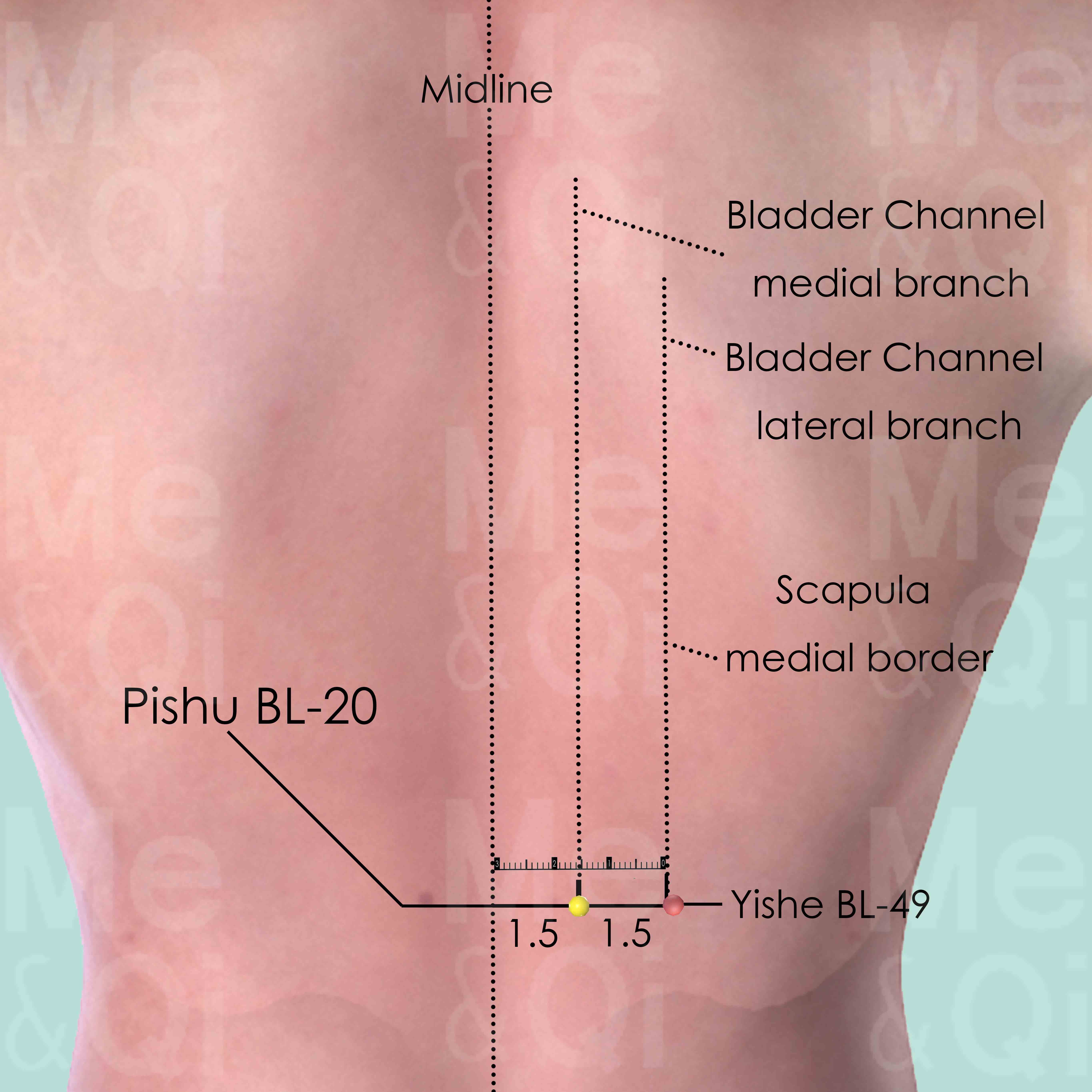
Pishu BL-20
1.5 cun lateral to the lower border of the spinous process of the 11th thoracic vertebra (T11).
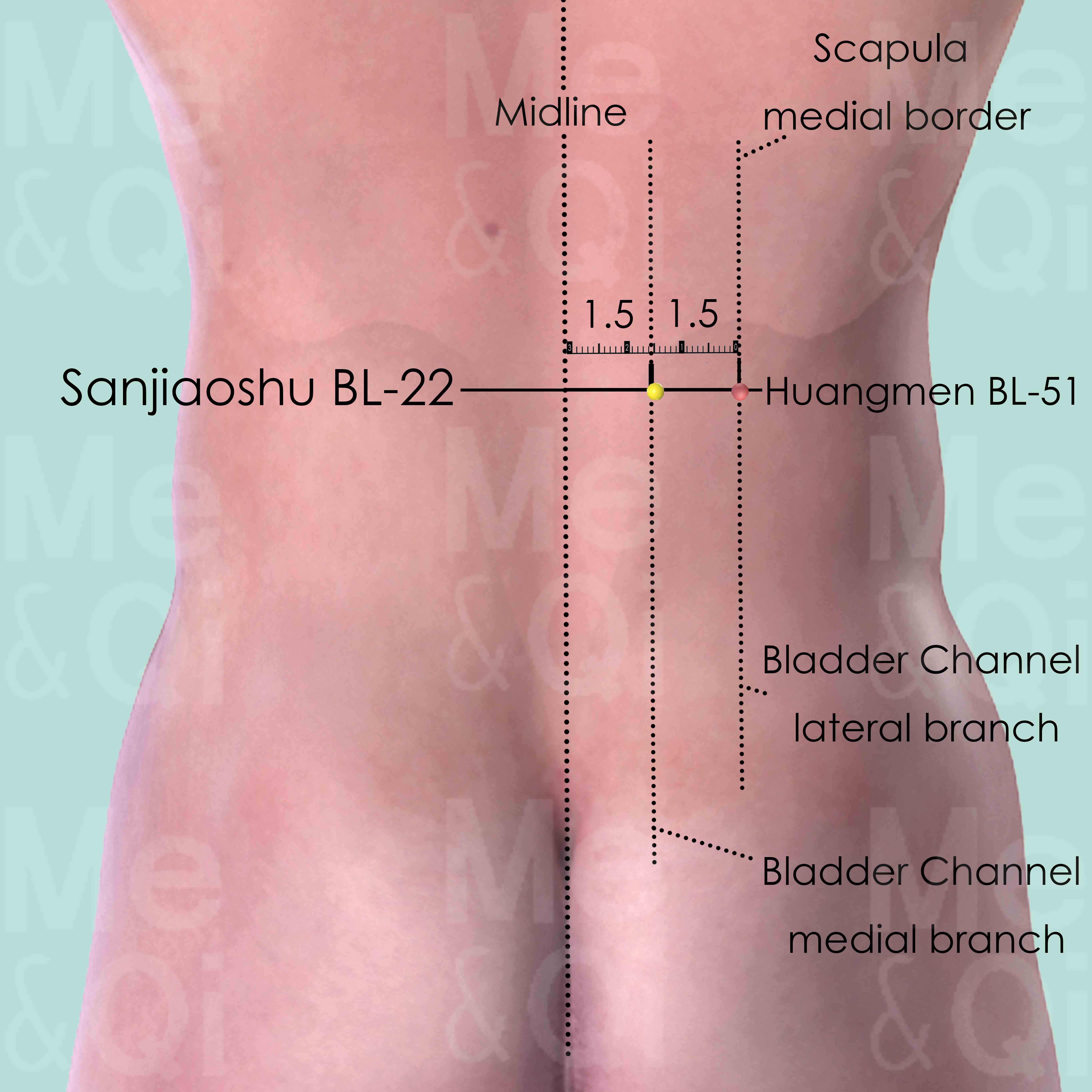
Sanjiaoshu BL-22
1.5 cun lateral to the lower border of the spinous process of the 1st lumbar vertebra.
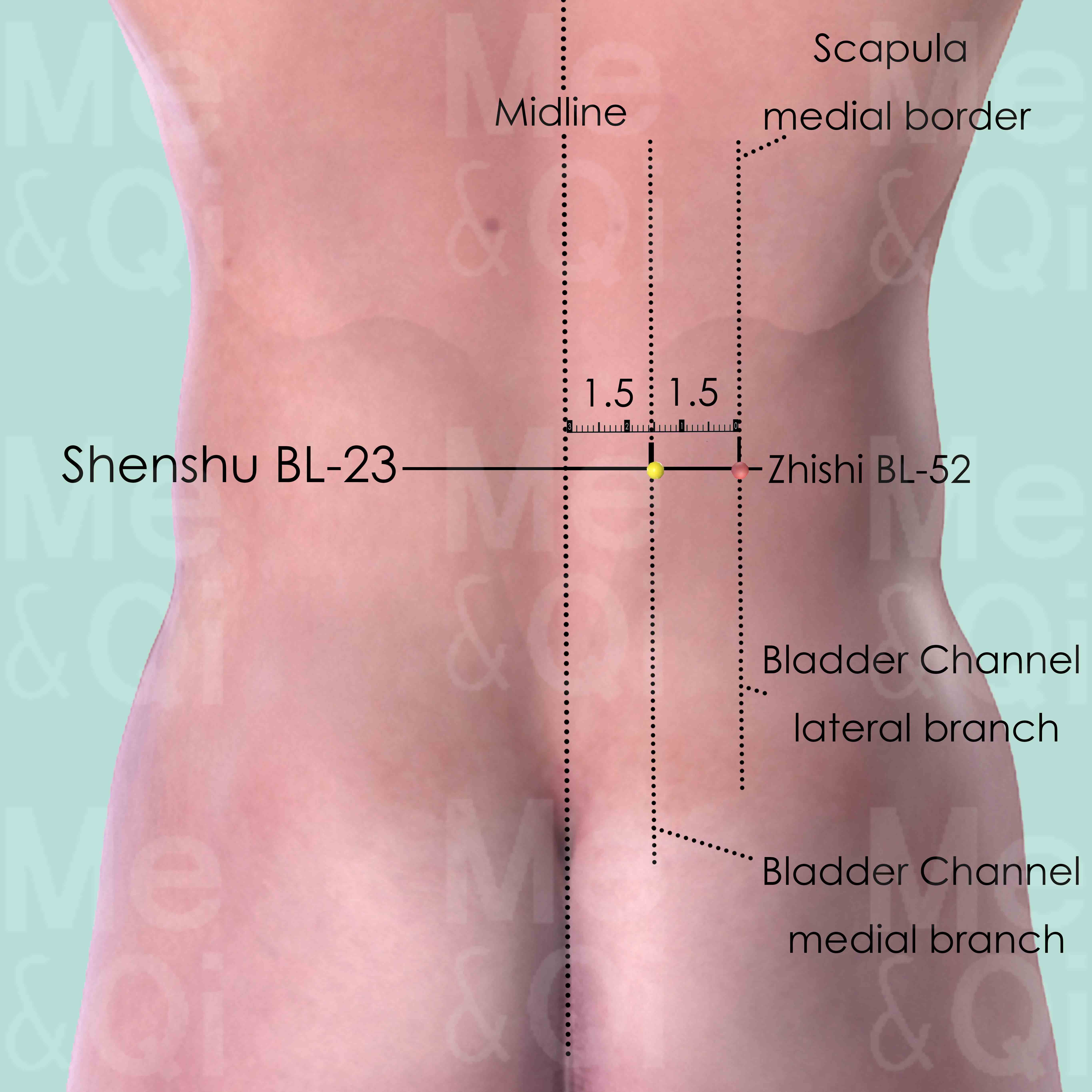
Shenshu BL-23
1.5 cun lateral to the lower border of the spinous process of the 2nd lumber vertebra (L2).
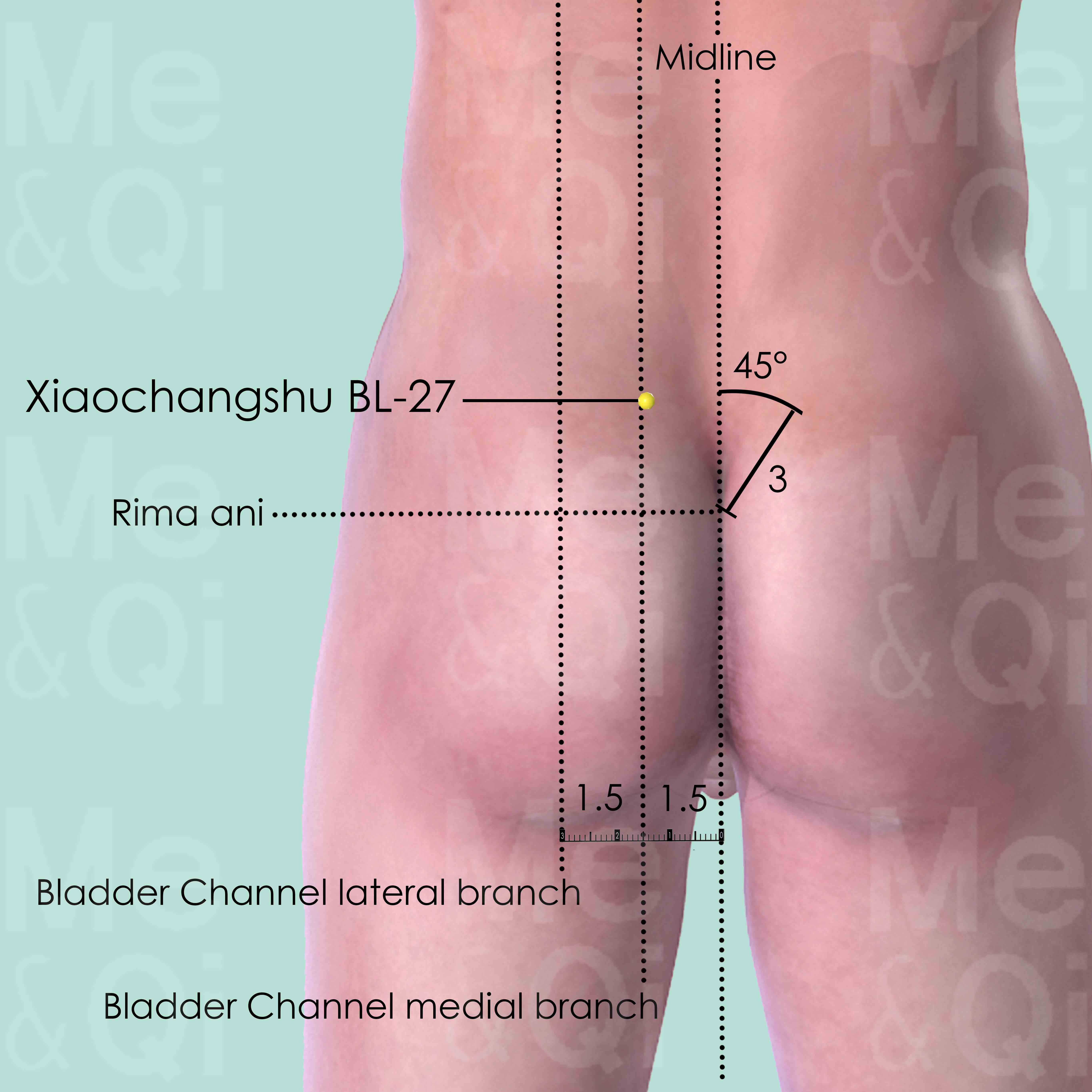
Xiaochangshu BL-27
At the level of the 1st posterior sacral foramen, 1.5 cun lateral to the posterior midline.
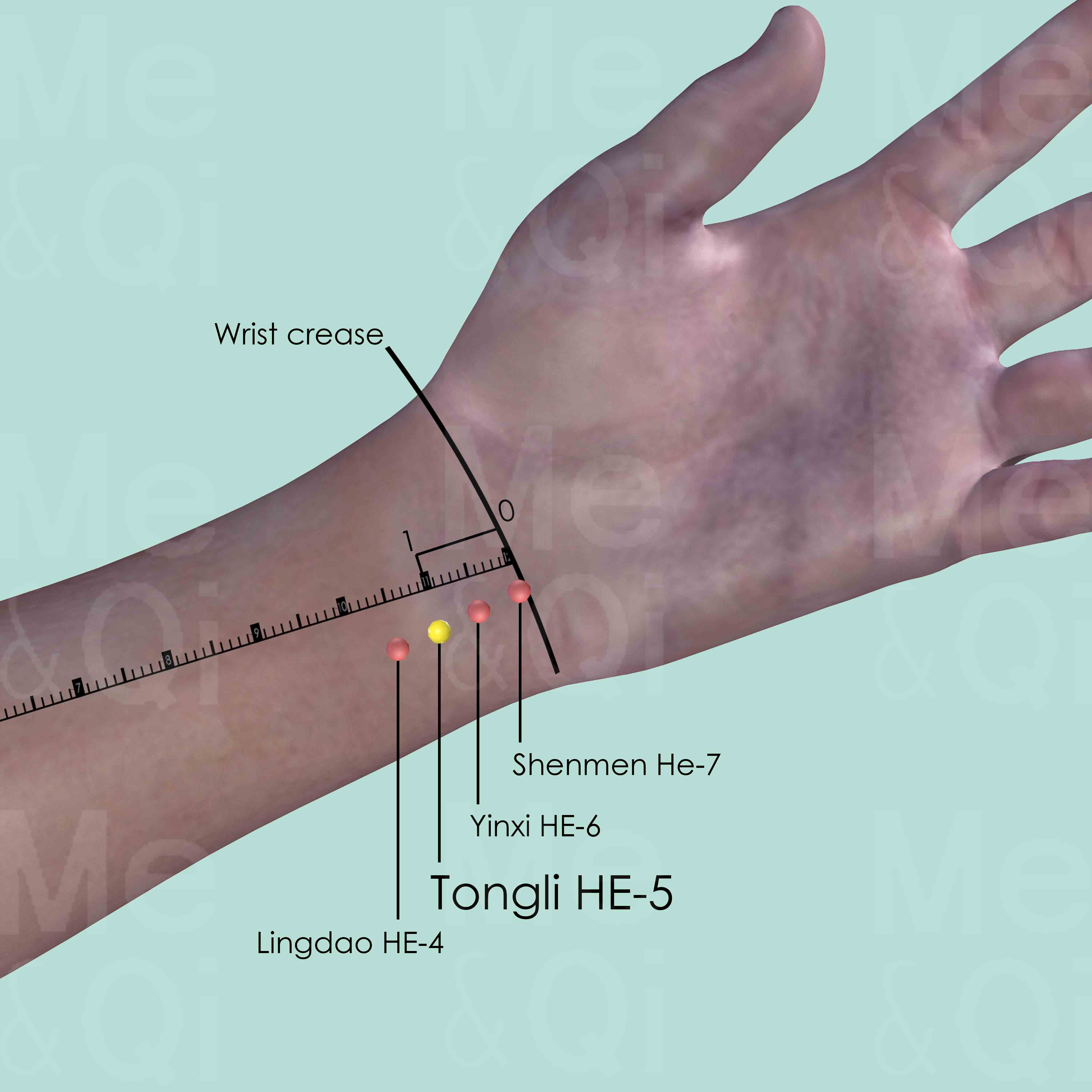
Tongli HE-5
On the radial side of the tendon of flexor carpi ulnaris muscle, 1 cun above the transverse crease of the wrist when the palm faces upward.
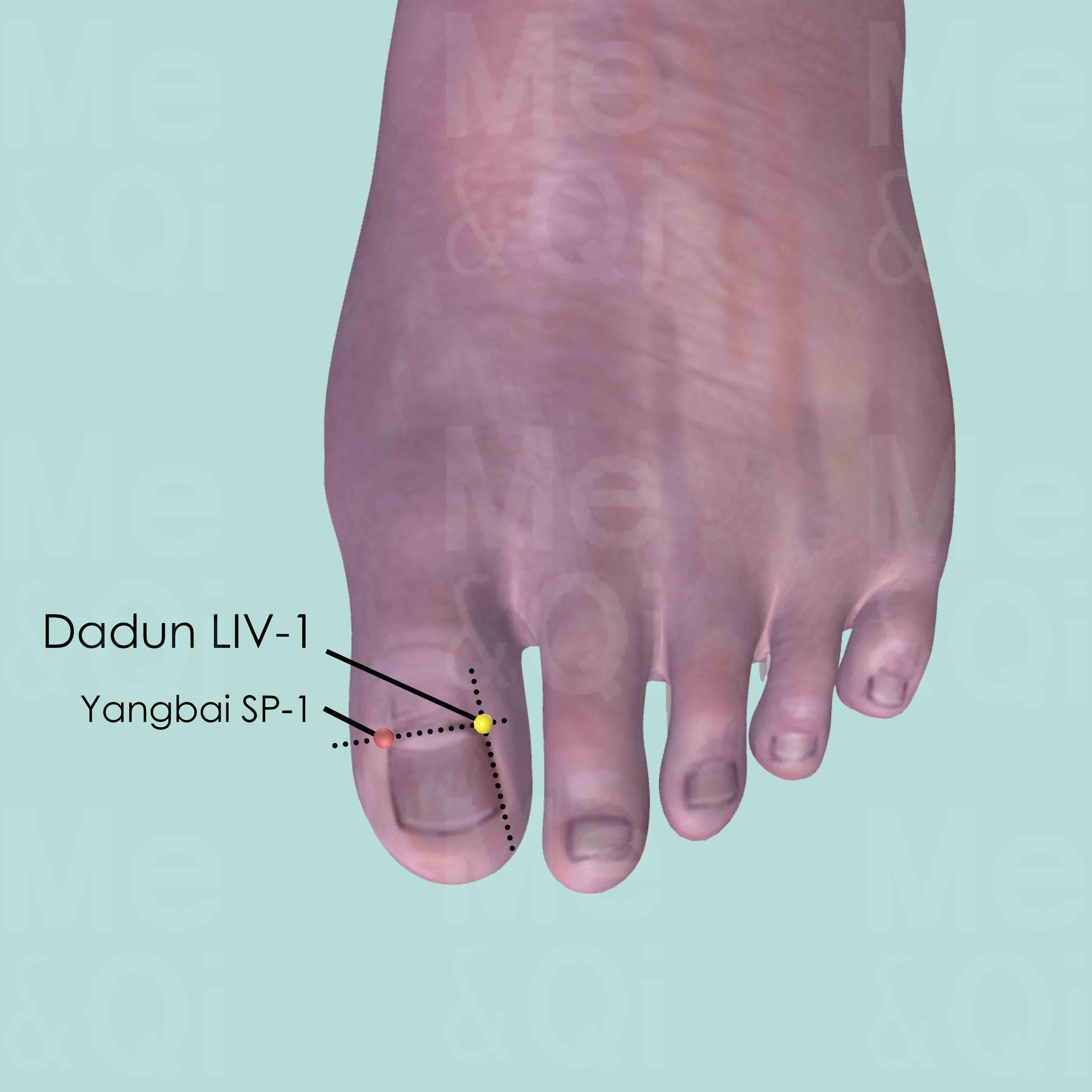
Dadun LIV-1
On the lateral side of the dorsum of the great toe terminal phalanx, between the lateral corner of the nail and interphalangeal joint.
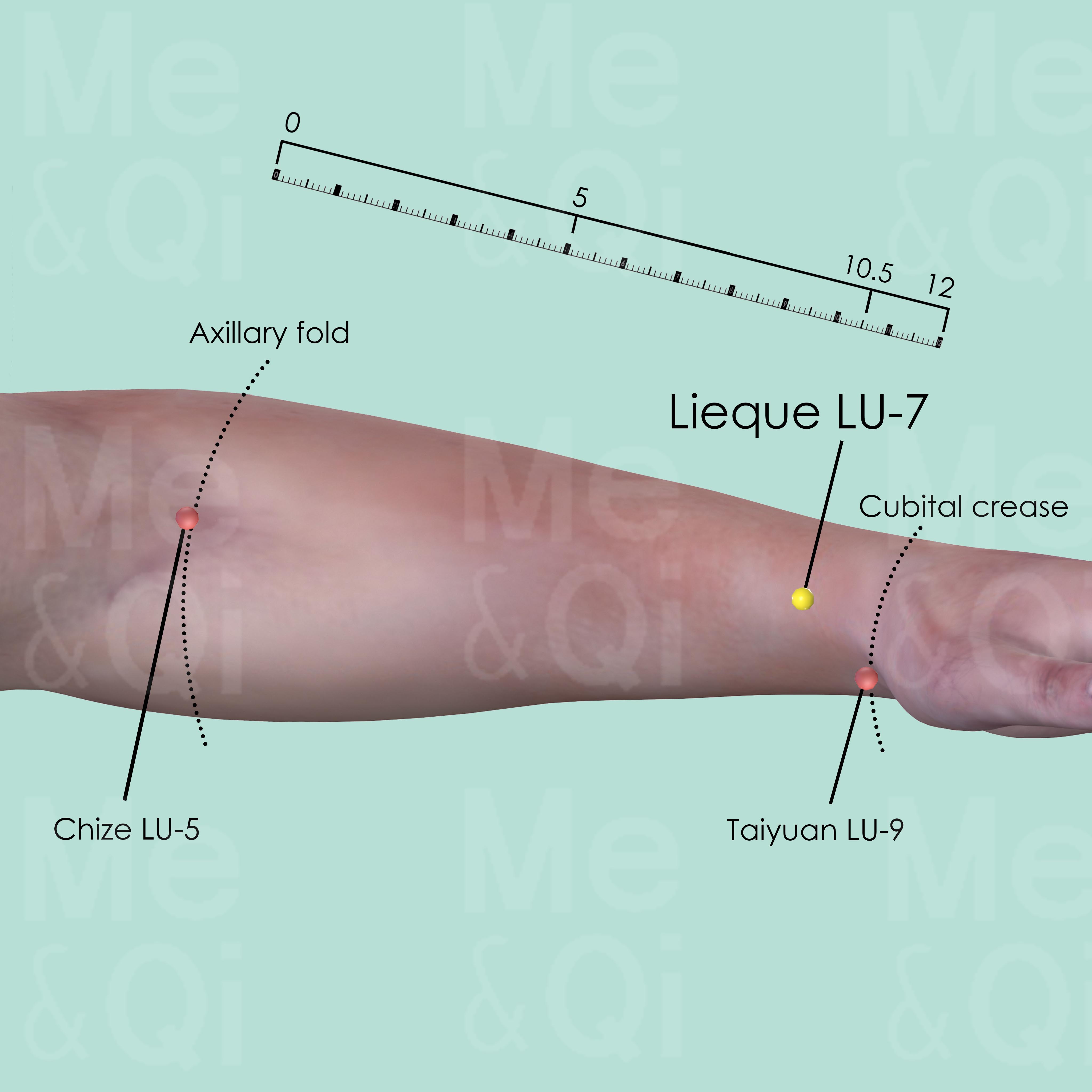
Lieque LU-7
Above the styloid process of the radius, about 1.5 cun proximal to the wrist crease (wrist joint space) in a V-shaped depression.

